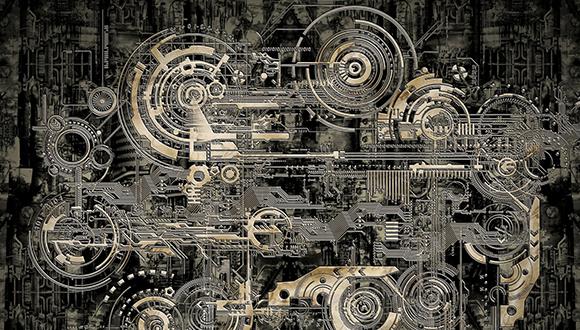Evaluating Mechanical Communication between Contractile Cells in Fibrous Environments by Finite-Element Modeling
~~
"ZOOM" SEMINAR
SCHOOL OF MECHANICAL ENGINEERING SEMINAR
Wednesday, October 21, 2020 at 14:00
Evaluating Mechanical Communication between Contractile Cells in Fibrous Environments by Finite-Element Modeling
Yoni Koren
M.Sc. student of Dr. Ayelet Lesman
Cells in tissues are embedded in fibrous environments, known as the extracellular matrix (ECM). ECM fibers are characterized by complex mechanics with nonlinear elastic properties including stiffening in tension and buckling in compression. Inside these networks, cells generate contractile forces, and these forces can propagate to long-ranges to reach distant cells, facilitating a mechanism of cell-cell mechanical communication. The physical mechanisms that govern mechanical communication between cells are still not fully understood, and better understanding of this process could have fundamental and practical implications.
In this seminar talk, I will present several finite element (FE) models of discrete fibrous networks embedded with cells [1-3]. Our FE simulations are complemented by biological experiments conducted in our lab. First, a model of a single contractile cell was developed to study the range of cell-induced displacement propagation. We demonstrated that cell contraction creates an elastically anisotropic state in its local environment with higher radial stiffness than transverse stiffness. This mechanism of elastic anisotropy dictates the long-range displacement propagation. Second, a model of pairs of cells was developed to systematically quantify long-range mechanical cell-cell communication. By correlating temporal ECM remodeling fluctuations near communicating cells, we were able to match between communicating pairs with high accuracy, and to identify whether and to what extent one cell was influenced by its communication partner. Finally, we examined the effect of force orientation applied relative to the other cell in establishment of mechanical communication.
Overall, this study provides new insights into the physical mechanisms that govern long-range communication between biological cells. It may deepen our understanding regarding biological processes that involve communication of cells mediated by the ECM, and provide useful tools to control force transmission between cells for tissue engineering applications and designing new biomaterials.
References:
[1] Goren S*, Koren Y*, Xu X, Lesman A. Elastic Anisotropy Governs the Range of Cell-Induced Displacements. Biophys J. 2020;118(5):1152-1164. doi:10.1016/j.bpj.2019.12.033. *equal contribution
[2] Nahum A, Koren Y, Natan S, Goren S, Lesman A, Zaritsky A. Quantifying the dynamics of long-range cell-cell mechanical communication. bioRxiv 2020.07.30.223149; doi: https://doi.org/10.1101/2020.07.30.223149
[3] Natan S, Koren Y, Shelah O, Goren S, Lesman A. Long-range mechanical coupling of cells in 3D fibrin gels. Mol Biol Cell. 2020;31(14):1474-1485. doi:10.1091/mbc.E20-01-0079
Join Zoom Meeting
https://zoom.us/j/96584758181?pwd=WC9PMXdsYzJ3NFdEN2Q5ZUtOZEVjdz09 The meeting will be recorded and made available on the School’s site.
~~
"ZOOM" SEMINAR
SCHOOL OF MECHANICAL ENGINEERING SEMINAR
Wednesday, October 21, 2020 at 14:00
Experimental investigation of solar converter based on photon-enhanced thermionic emission (PETE)
Thesis submitted toward the degree of
Master of Science in Mechanical Engineering
In Tel-Aviv University
by
Alon Herman
Under the supervision of Prof. Abraham Kribus
Abstract:
Photon-enhanced thermionic emission (PETE) converts sunlight to electricity with the combined photonic and thermal excitation of charge carriers based on a high-temperature cathode that is emitting energetic electrons and a low temperature anode absorbing the electrons. By using a semiconductor cathode, optically generated electrons increase the cathode’s conduction band charge population allowing high electron emission at temperatures lower than the common range for thermionic emitters with a metal cathode. Theoretical analyses predict conversion efficiency that can exceed the efficiency of traditional solar thermal and photovoltaic converters.
Experimental work in the field has usually focused on the analysis of the single component and not a complete system, and has so far led to very low conversion efficiencies. We present in this work an integrated PETE solar converter system based on two innovative components: (i) A cathode based on the III-nitride material family, with an InGaN/GaN Multi-Quantum-Well (MQW) structure as the absorber, and AlN as the emitter, and (ii) An anode with ultra-low work function, based on phosphorous doped polycrystalline diamond film on a metal substrate. An experimental setup was developed and installed in a high vacuum chamber, which provides: illumination, controlled cathode heating, water cooling for the anode, H2 intake to the chamber for surface activation, and an accurate control of the inter-electrode gap down to ~15µm to reduce negative space charge effect.
We have designed and fabricated the cathode and anode, overcoming a main challenge of creating ohmic contacts with p-GaN. The final testing results of the integrated converter are presented an analyzed. The system did not produce the desired photo-thermionic behavior. Possible explanations, lessons learned, and recommendations for future work are presented.
Join Zoom Meeting
https://zoom.us/j/96584758181?pwd=WC9PMXdsYzJ3NFdEN2Q5ZUtOZEVjdz09 The meeting will be recorded and made available on the School’s site.


